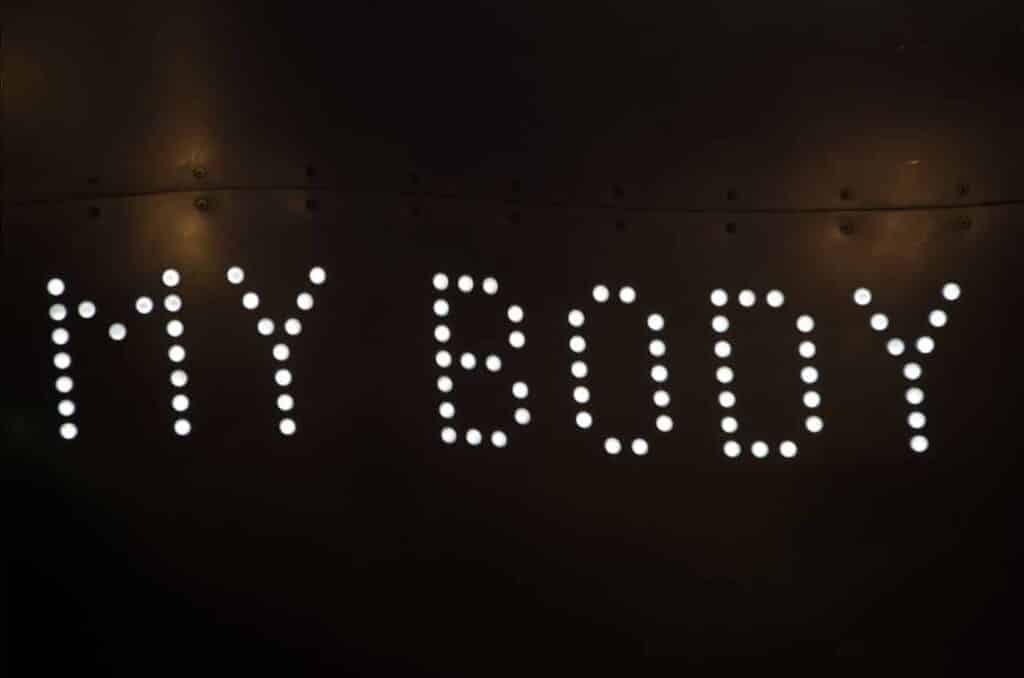
How Body Image Shapes Our Mental Health: 3 Tips to Shift to Body Neutrality By Joanne Kardell, MSW, LCSW
By Joanne Kardell, MSW, LCSW
How Body Image Shapes Our Mental Health: 3 Tips to Shift to Body Neutrality
How Body Image Shapes Our Mental Health:
3 Tips to Shift to Body Neutrality
I was nine years old. While at a friend’s birthday party, as her mom passed around slices of
birthday cake, the other girls and I recited, word for word, a diet commercial. I can still picture
the commercial; a group of women sitting around a table declining cake. I can’t remember
which diet strategy or product this commercial was advertising, nor did a deep dive on YouTube
yield the result. This is just one of countless memories I have where I received the message that
my body was not ok the way it was.
As a therapist, I frequently hear similar stories from clients. Clients of all ages, genders, and
ethnicities. Even from clients where their focus in therapy is not body image. Stories ingrained
in their minds about how others in their life, the media, their experiences, told them their body
should be different, that it is not good enough.
Body image is how you experience your own body. This includes your beliefs, feelings,
perceptions, thoughts, and behaviors. Having a low body image can impact our mental health.
Many struggling with their body image also have low self-esteem, may feel increased feelings of
depression, or may develop an eating disorder.
Our body image starts to form in early childhood. It is influenced by many things, our culture,
physical characteristics, and interactions with others, such as friends and family. In a study with
elementary school children (ages 6-12 years old), 40-60% of them reported dissatisfaction with
part of their body shape or size (Smolak, 2011). Due to the physical and social changes
adolescents endure, body image is at a critical point during the adolescent years; 71% of
adolescents report a low body image (Hosseini & Padhy, 2023).
Anyone of any size, gender, or ethnicity, might dislike their body. The opposite, then, is also
true-anyone can also learn to accept and even love their body. This probably sounds like a
challenging, perhaps even impossible, task. Certainly, an ongoing one, at least. If you spent
most of your life dissatisfied with your body, how can you move to the other end of the spectrum
and suddenly love your body? The body positivity movement has been growing in recent years.
Body positivity encourages people to accept bodies of all shapes and sizes.
While this is a great social movement, many face difficulty in changing their views and suddenly embracing their body.
Here’s the reality though, if you do not at least try to shift your thoughts, nothing will ever
change. Another concept that hopefully feels more attainable is to practice body neutrality.
Body neutrality involves aiming to move away from self-hatred to respecting your body. It is to
try and no longer support hating your body. Here are a few tips to try shifting your mindset:
1. Delete or unfollow any social media accounts, etc. that perpetuate negative feelings about
yourself. Research has shown that elevated social media use correlates to higher cases of
eating disorders and overall body dissatisfaction (Hosseini & Padhy, 2023)
2. Recognize your strengths. What are you good at? What do your friends like about you?
What makes you unique?
3. Challenge your negative self-talk with neutral phrases about your body. Here are some
examples:
- My legs are strong and help me move through my day
- My eyes allow me to see beauty in the world
- My brain helps me think and learn
Journal Prompts:
- How would you describe your relationship with your body?
- If you could, how would you change the world to be more body friendly?
- Part 1: Write a letter to a part of your body
- Part 2: Have your body part write back to you
Body image is a broad topic, and in no way does this article even begin to encompass everything.
For more information, please check out the resources provided below.
Resources:
Books:
Body Outlaws edited by Ophira Edut
Amanda’s Big Dream by Judith Matz (for children)
Beyond a Shadow of a Diet: The Comprehensive Guide to Treating Binge Eating Disorder,
Compulsive Eating, and Emotional Overeating by Judith Matz and Ellen Frankel
Websites:
https://asdah.org/health-at-every-size-haes-approach/
www.bodypositive.com
References:
https://www.nationaleatingdisorders.org/blog/5-steps-body-neutrality
Cash, T.F. (2008). The Body Image Workbook. (Second Edition). New Harbinger Publications,
Inc.
Smolak, L. (2011). Body image development in childhood. In T. Cash & L. Smolak (Eds.), Body
Image: A Handbook of Science, Practice, and Prevention (2 nd ed.). New York: Guilford
Hosseini, SA, Padhy, RK. Body Image Distortion. (2023 Feb 12th). In: StatPearls [Internet].
StatPearls Publishing; 2023 Jan.
Available from: https://www.ncbi.nlm.nih.gov/books/NBK546582/
